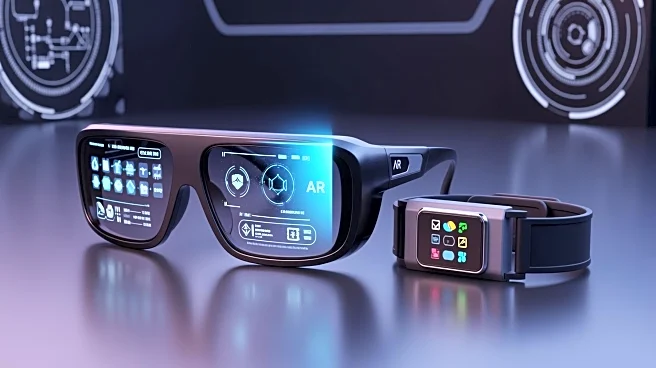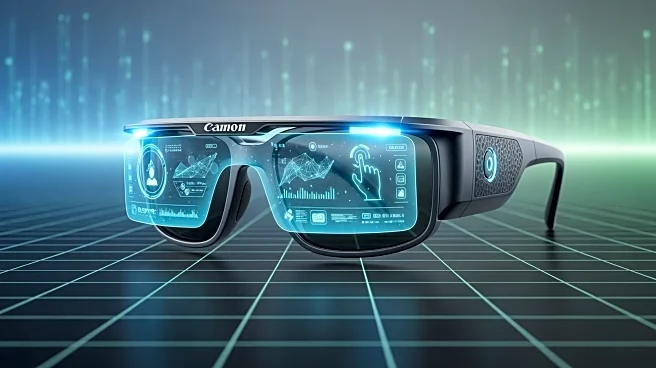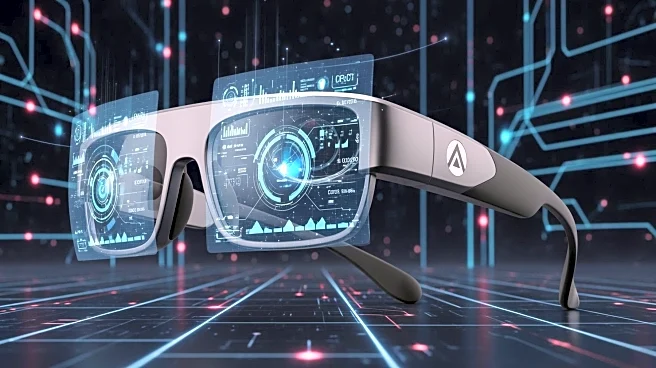What's Happening?
Meta has announced the release of its new smart glasses featuring a built-in display and wristband controller, marking a significant shift from developer demos to consumer-ready hardware. This announcement,
made on September 17, 2025, is expected to drive a substantial increase in headset shipments, with IDC forecasting a 39.2% growth in 2025. The move positions Meta as a key player in the retail hardware market, raising questions about costs, privacy, and app-store dynamics. Competitors like Amazon and partnerships between Samsung and Google are now under pressure to respond to Meta's consumer-focused strategy.
Why It's Important?
The introduction of Meta's smart glasses is poised to accelerate the adoption of augmented reality (AR) among consumers. This shift from prototypes to retail products could lead to the development of new app economies, retail logistics, and advertising formats. Consumers may gain earlier access to innovative applications such as heads-up maps and shopping overlays, although they will face challenges related to privacy and higher costs. The competitive landscape is intensifying, with rivals needing to expedite their product launches to keep pace with Meta's advancements.
What's Next?
As Meta's smart glasses enter the market, developers and advertisers are expected to quickly adapt to the new hardware, potentially leading to a rapid expansion of AR applications. The success of these glasses will depend on factors such as distribution, battery life, and software regulations. Investors and ad buyers are closely monitoring whether Meta's hardware can generate recurring revenue beyond initial device sales. The industry may see a shift from niche pilots to mainstream applications within months, contingent on consumer adoption and satisfaction.
Beyond the Headlines
The launch of Meta's smart glasses could have broader implications for privacy and data management, as consumers navigate new rules for data sharing and payments. The success of early applications may determine the establishment of ecosystems that could lock in users quickly. However, if the hardware fails to meet expectations in terms of price or battery life, the momentum for AR adoption may stall, favoring cautious enterprise-first rollouts instead.











